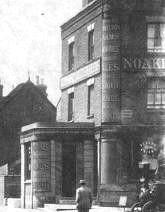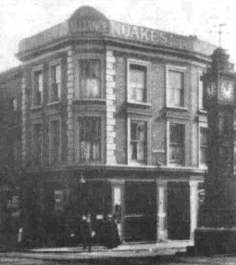
Addiscombe
Home
Heritage
Year 2007 Index
Feedback
Norwood's pubs are put into perspective

The district of Norwood was created almost entirely from scratch on formerly open common land at the beginning of the 19th century. This could be the reason why so many pubs, inns, taverns and hotels sprang into existence, peaking during the Victorian period, a book reveals.
Using more than 100 old photographs, pub historian John Coulter examines Norwood's 200 year pub history in his book "Norwood Pubs", from the Images of London series.
Before Norwood came into existence, there were only a handful of country pubs but as the communities developed large new ones were built to serve a growing population. In its Victorian heyday Norwood had well over 100 drinking establishments.
In his book's forward John says: "The task for the Norwood pub historian is to chronicle the modest growth between 1800 to 1850 and the explosion in numbers in the high Victorian period. Norwood was then seriously over supplied with pub and hotels."
This book gives details of more than 100 of which less then half survive. Why were there so many pubs? The demand must obviously have been greater than it is today probably because the home lives of most Victorians were even more dismal than our own.

"The history of Norwood pubs" illustrates another reason for this multiplication in the love affair of so many Victorian builders with the idea of innkeeping. In the book the reader will find countless examples of pubs being run by the men who built them."
Lower or West Norwood was the oldest and poorest part of the district and had the highest concentration of pubs.
One of the pubs featured in the book is the Alliance in South Norwood high street. It was built around 1864 and opened as a beer house by Charles Churney. It is thought the pub was named in honour of the marriage of the Prince of Wales and Princess Alexandra of Denmark in 1863, an event which also gave a name to a rival establishment, the Alexandra Hotel, across the railway tracks.
Another pub featured is the Hamilton Arms, built on the corner of Clive Road and Hamilton Road in the 1850s, when both roads were new. It closed in 1935 and in 1938 a block of flats known as Eaton Court was built on the site. The pub was one of the countless victims of the 1904 Licensing Act which allowed magistrates to suppress pubs they considered superfluous by compensating the owners.
This had a particularly strong effect in London between the wars, when brewers were persuaded to surrender the licences of several of their smaller and older houses in return for the grant of a new licence for a pub in an expanding suburb.